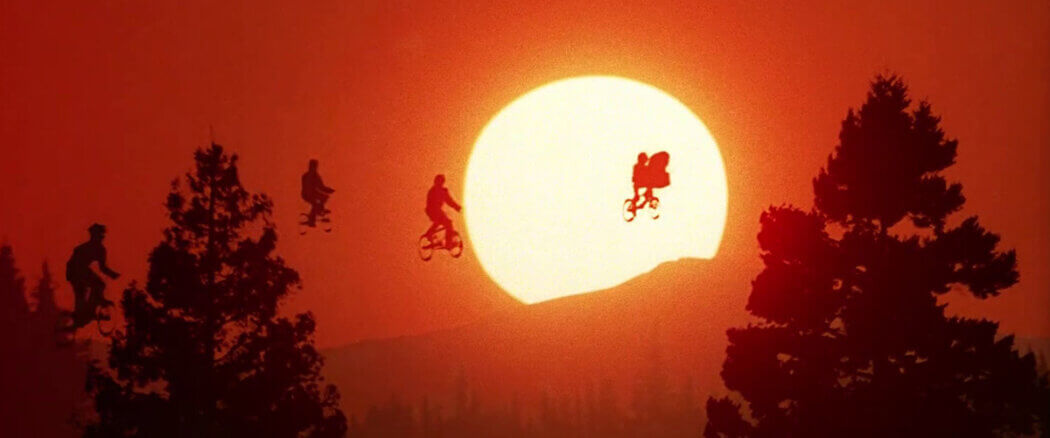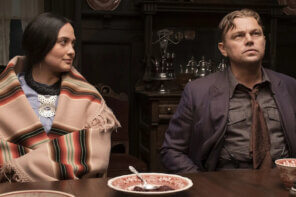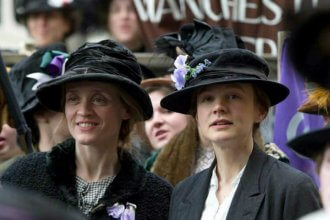The final scene of E.T. the Extra Terrestrial remains a memorable and poignant moment for me replete with the distinct John Williams score in which the trumpets and tympanies accentuate the visceral emotions that swell as the main characters behold E.T.’s departure from their world and from their lives. As film critic Joshua Larsen has noted, several of Steven Spielberg’s films include shots of characters gazing upwards towards the heavens, resembling the apostles of Christ beholding His ascension in the New Testament book of Acts. As protagonist Elliot (Henry Thomas), his mother, siblings and friends fix their gaze on the night skies (the original title of this 1982 classic), their facial expressions illumined by Allen Daviau’s cinematography portrays the magic Spielberg is known to evoke in his films. Spielberg became the quintessential director who shaped my childhood. I put a basket on my bike, placed a plush E.T. doll in it and rode from one end of Grant Boulevard to the other expecting to fly. I put on long johns and a winter coat and walked around the neighborhood with a ridiculous flashlight in summer because I was that impacted by seeing Elliot search for ET in his backyard; I desperately wanted the Extra Terrestrial to come visit me too! It would be apt to say: Steven Spielberg made me believe I could fly!
The Fabelmans bear witness
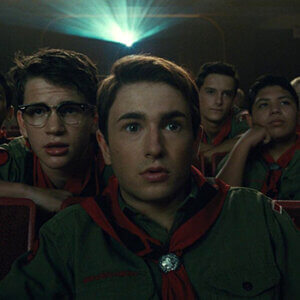
There’s a scene in Spielberg’s quasi autobiographical film, The Fabelmans, in which a character named Logan angrily proclaims to Sam Fabelman (a proxy for a young Spielberg), “you made me look like I can fly…” Sam had previously screened the film he edited for their high school’s Senior Ditch Day, in which he portrayed his nemesis, Logan as though he were a god among mere mortals. Logan experiences moral compunction upon seeing an undeservedly gracious portrayal of himself and decides to confront Sam in the hallway after the film’s screening. In utter frustration, he exclaims, “you made me look like I can fly…but I can’t fly!” Yet this is precisely why we who grew up on Spielberg movies loved his work! His films created the illusions that inspired us and spoke to that part of us that is still open to the possibility that the world just might be magical. As GK Chesterton intimated, there’s something mysterious and enchanted about the world – it may in fact be inhabited by the likes of fairies, sprites, hobbits, leprechauns, or even benevolent extra terrestrials.
The Fabelmans showed how Spielberg used editing to capture both the beauty and the horror of what lies behind the veil of reality. You can see throughout the movie, the intersection between things happening in his real life and his engagement with film. For Spielberg, editing and the traumatic plot points of his personal life persisted in a unique dialog. For example, in the first act of the film, a young Sammy Fabelman witnesses a traumatic train collision in the first movie he ever saw, Cecile B DeMille’s Greatest Show on Earth. After seeing the film, he decides he wants a train set as a Hannukah gift. Sammy begins to replicate the collision he saw on screen by crashing his model trains. While his father, Burt (Paul Dano), condemns the action, it’s his mother, Mitzi (Michelle Williams), who understands, “he needs to control it…” Mitzi, in response, lends Sammy his father’s 8mm camera so he can capture and constantly relive the moment. At the same time, Sam/Spielberg struggled with how to articulate the most significant and pivotal moments of his life through film. As such, this tension signifies the idea of the filmmaker functioning in a priestly capacity.
The mystery and glory
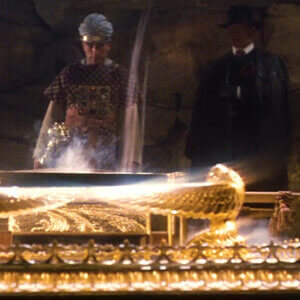 Raiders of the Lost Ark (1981) became the other iconic Spielberg film that informed my childhood. Its invocation of the Ark of Covenant and its intimation of the holy of holies bring to mind DeMille’s epic, The Ten Commandments. While Fabelmans emphasizes the influence of Greatest Show on Earth, it’s clear that Ten Commandments also made an impact. We can see this especially in the way the penultimate scene of Raiders captures the mystery and the wonder reminiscent of the Lord, who remains both powerful and terrifying, yet simultaneously beautiful (cf. Psalm 29).
Raiders of the Lost Ark (1981) became the other iconic Spielberg film that informed my childhood. Its invocation of the Ark of Covenant and its intimation of the holy of holies bring to mind DeMille’s epic, The Ten Commandments. While Fabelmans emphasizes the influence of Greatest Show on Earth, it’s clear that Ten Commandments also made an impact. We can see this especially in the way the penultimate scene of Raiders captures the mystery and the wonder reminiscent of the Lord, who remains both powerful and terrifying, yet simultaneously beautiful (cf. Psalm 29).
The way Spielberg takes what we look at as being horrifying and haunting and intermingles that with the sense of awe and admiration sets him apart from other directors whose work I revered as a child. In E.T., for example, we don’t get to treat an alien invasion as being completely terrifying, but we also don’t get to treat it as something that would be completely benign either (at least not subjectively). In the incarnate Christ, we see the coming together of these two realities. In the gospels, Jesus has terrifying moments like His Transfiguration, where the manifestation of His glory accompanied by the Father’s voiceover causes Peter, James, and John to fall prostrate in fear. Or what about Christ’s anger in the temple? It’s terrifying, yet it’s also a display of righteous zeal and pure love toward God.

Consider the Opening of E.T. in which the score retains hints of a church organ thereby heightening a sense of foreboding as we see the extra terrestrial visitors engaged in their botanical exploration of Earth. The most significant moment in the film, though, doesn’t concern the special effects, though that aspect initially draws us in, captures us and conveys something to us at a rudimentary level. What ultimately sustains us is the deeper thing that speaks to a deeper part of who we are. Looking back, I have realized my new favorite scene in E.T. occurs in that final act in the forest when the characters look up at the skies. They have been touched by something other worldly, their lives can never be the same again.
The sentimentality of that moment recalls a scene in Ryan Coogler’s 2018 Marvel movie, Black Panther, which bears the cinematic marks of Spielberg. As the character, Erik Kilmonger (N’Jadaka) reunites with his deceased father by accessing a portal to the Wakandan ancestral plane, the conversation that ensues portrays a vital human to human connection while hinting at something transcendent that drives that connection. Similarly, there’s a correlation between E.T.’s arrival and his relationships with others – namely the manner in which he shares emotions with Elliot and literally experiences what he experiences through their inexplicable bond. Much like the aforementioned scene from Black Panther, there’s sort of this silent whisper connoting the deeper thing happening that works beneath the surface of the spectacular thing happening. So, initially, as a kid, I was amazed by seeing bikes flying against the full moon, E.T. healing Elliot’s finger, etc, but the deeper sentimental magic implicit in those final shots has sustained my heart and made E.T. my favorite movie at 45 years old!
As I consider how and why these childhood films spoke to me, I’m reminded that a director can use imagery in such a way as to invoke law and grace, while using film as a medium to say something about the world beyond the veil. Jesus comes to us from beyond the veil and He is law and grace, or as St John puts it, “full of grace and truth” (John 1:14, 17). Christ, through His death, fulfilled the law that in His ascension, He might go behind the veil to intercede for us. In fact, He is the veil that was torn that we might receive His grace.
When the lights come up and the curtain closes in a theater (do they still do that btw?), the magic of the viewing experience yet remains: we remember our favorite lines, or we may act out our favorite scenes…or buy the merchandise all to retain the transcendence of our viewing experience. How much more is this the case when the veil is irreparably torn from our eyes and we behold a light that never fades? St Paul indicates in 2 Corinthians that, “we all, with unveiled face, beholding as in a mirror the glory of the Lord, are being transformed into the same image from glory to glory, just as by the Spirit of the Lord”. I’d rather be scripted into that story any day!

